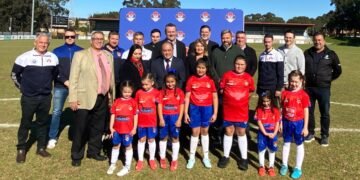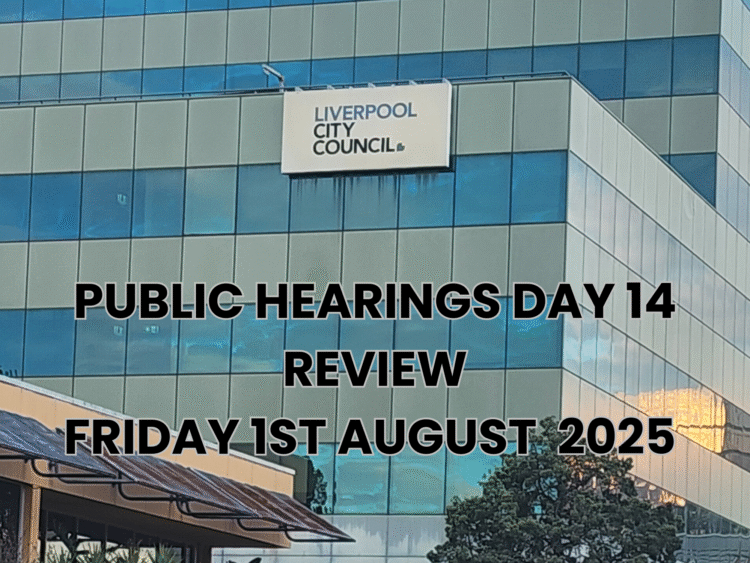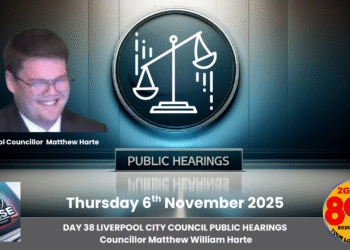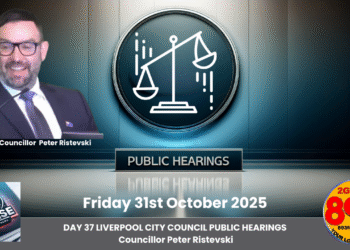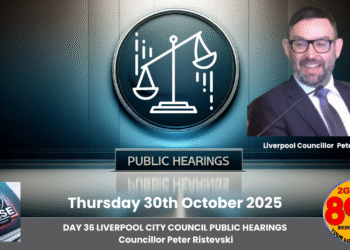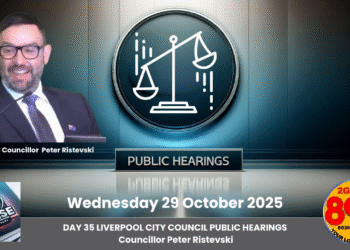The substantive part of the hearings on Day 14 centred on evidence from Ms Emily Sarah Tinson, a Program Manager at Liverpool City Council, who affirmed her testimony before the Commissioner. Ms Tinson, employed by the council for 11 years, detailed her career progression from a communications officer to her current role overseeing the Western Sydney Infrastructure Grants Program (WSIG), a position she assumed in October 2023.
Ms Tinson provided an in-depth overview of the WSIG, originally launched as the WestInvest program in 2022 by the NSW Government. Described as a $5 billion initiative to fund transformational infrastructure across Western Sydney, the program targeted 15 eligible Local Government Areas, including Liverpool. Ms Tinson explained that the council submitted 22 applications worth over $442 million, with six ultimately successful, securing significant funding for projects such as Light Horse Park embellishments (over $27 million), Brickmakers Creek, Carnes Hill Aquatic and Leisure Centre, and three streetscape upgrades (Macquarie, Railway, and Scott Streets).
Under questioning from Ms McDonald, Ms Tinson outlined the governance structures established to manage these grants. She described Project Control Groups (PCGs) for oversight—one for each major project and a combined one for the streetscape initiatives—alongside project delivery teams handling on-the-ground implementation. As Program Manager, Ms Tinson confirmed her membership in all PCGs, reporting to the acting Director of Operations, Mr Peter Scicluna. She also noted her earlier involvement in coordinating applications while in the economic development team, highlighting the collaborative effort behind the council’s bids.
The testimony delved into program guidelines, with documents like the WestInvest Program Guidelines (dated March 2022, updated June 2022) and funding deeds presented. Ms Tinson acknowledged extended project timelines, with completion dates now pushed to December 2027 for most initiatives. Discussions also touched on co-contributions, where councils commit additional funds to bolster grant applications, a practice evident in Liverpool’s project costings.
Key Insights and Community Impact
While the session was technical, focusing on bureaucratic processes and funding mechanisms, it underscored the scale of investment flowing into Liverpool’s infrastructure. Projects like Light Horse Park and Carnes Hill Aquatic Centre promise to enhance community spaces, aligning with the program’s goal of improving liveability—a point repeatedly emphasised in the guidelines. However, the inquiry’s broader context, probing governance and decision-making at the council, loomed over the evidence, with counsel assisting meticulously tracing accountability structures.
No direct references emerged to specific controversies or individuals beyond the operational scope of the grants program during Ms Tinson’s testimony in the provided transcript segment. The session adjourned with further examination pending, leaving observers keen to see how these infrastructure efforts tie into the inquiry’s overarching scrutiny of council conduct.
Looking Ahead
The Public Inquiry into Liverpool City Council continues to unravel complex layers of local governance, with today’s evidence offering a glimpse into the council’s strategic priorities through major grant-funded projects. As the hearings pause, they are set to resume on Monday, 18 August 2025, when further insights into the council’s operations are expected to surface.

